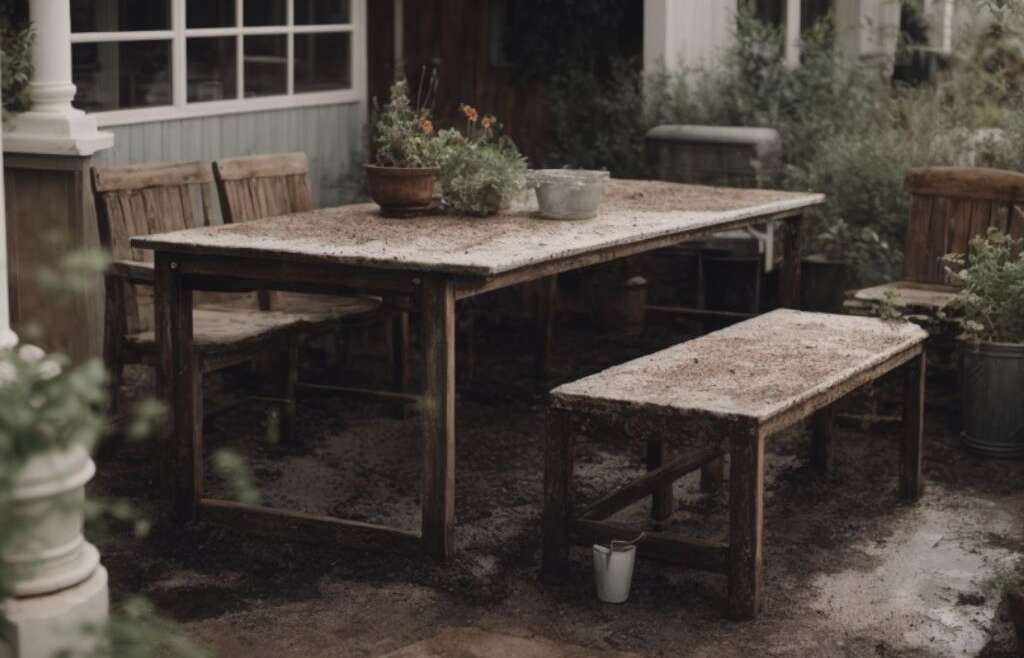Are you looking to keep your outdoor space looking clean and inviting? Cleaning resin plastic patio furniture is an important part of maintaining its beauty and longevity.
In this article, we will explore the materials needed and the step-by-step process to effectively clean your outdoor furniture.
We will also provide some helpful tips for stubborn stains and maintenance, so you can keep your patio furniture looking its best for years to come. Whether you’re a seasoned pro or a beginner in outdoor furniture maintenance, this article has something for everyone.
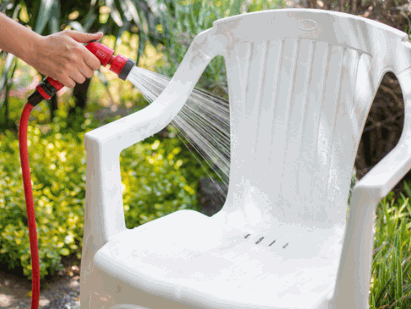
Why Is Cleaning Resin Plastic Patio Furniture Important?
Cleaning resin plastic patio furniture is crucial for maintaining its appearance, protecting it from damage, and ensuring its longevity and durability.
Regular cleaning not only keeps the furniture looking its best but also safeguards it from the harsh effects of outdoor elements such as UV rays, rain, and dirt.
By adhering to a consistent cleaning schedule and using the right cleaning products, the furniture can retain its vibrant color, resist cracking or fading, and have a prolonged lifespan.
This maintenance routine is essential for preserving the investment made in outdoor furniture and ensuring its continued enjoyment for years to come.
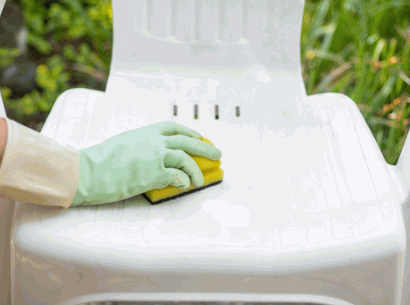
What Materials Do You Need To Clean Resin Plastic Patio Furniture?
To clean resin plastic patio furniture effectively, you will need cleaning products such as mild soap, water, a soft cloth, a scrub brush, and a hose for rinsing.
Mild soap is gentle enough to clean the furniture without causing any damage to the resin plastic material. Water is essential for diluting the soap and rinsing off any dirt or grime.
A soft cloth is used for wiping down the surfaces, while a scrub brush can be used for more stubborn stains. The hose is used to thoroughly rinse off the soap and any remaining debris, leaving the furniture looking fresh and clean.
Take a look: What Is Resin Wicker Patio Furniture
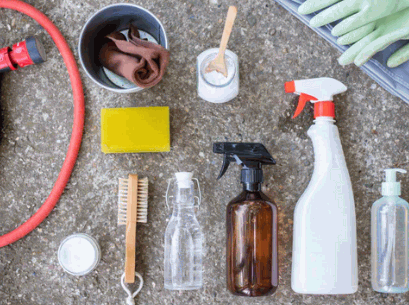
How To Clean Resin Plastic Patio Furniture?
Cleaning resin plastic patio furniture involves a series of steps to ensure the thorough removal of dirt, grime, stains, and mold while preserving its appearance and durability.
Remove Loose Debris
The first step in cleaning resin-plastic patio furniture is to remove any loose debris, including dirt, grime, stains, mold, and mildew that may have accumulated on the surface. This step is crucial to ensure that the cleaning process is effective and to maintain the furniture’s aesthetics and durability. Accumulated debris can lead to staining, deterioration of the material, and unpleasant odors.
To effectively remove dirt and grime, use a gentle cleaning solution and a soft-bristle brush to scrub the surface. For tougher stains and mold, a mixture of vinegar and water or a commercial cleaner designed for outdoor furniture can be highly effective.
Regular maintenance of this nature contributes to the longevity of your outdoor furniture.
Prepare Cleaning Solution
Next, it’s important to prepare a cleaning solution using mild soap and water. Make sure to use a soap that is suitable for outdoor furniture and aligns with proper care guidelines.
Mix a few drops of mild dish soap with warm water in a bucket, creating a soapy solution. Avoid using harsh chemicals, as they can damage the resin plastic material.
Gently stir the solution to ensure it is well combined. This gentle cleaning solution will effectively remove dirt, dust, and grime from the patio furniture without causing any harm to the surface. Once the solution is ready, proceed to the next step of cleaning the furniture.
Scrub Furniture
Using a scrub brush, gently clean the resin plastic patio furniture. This ensures thorough coverage and effective removal of any embedded dirt or stains as part of the cleaning process.
When cleaning furniture, it’s important to use gentle yet firm pressure to ensure thorough cleaning. Be sure to pay extra attention to crevices and corners where dirt and grime can build up.
Regular cleaning not only keeps furniture looking its best but also extends its lifespan by preventing discoloration and degradation. After scrubbing, be sure to rinse the furniture thoroughly to remove any remaining soap or cleaner residue. Allow it to air dry completely before use to maintain its quality.
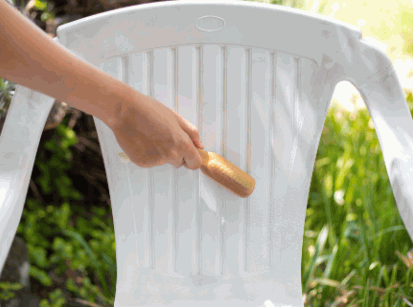
Rinse Thoroughly
Rinse the furniture thoroughly using a hose to remove any remaining dirt and cleaning solution. This ensures a clean and residue-free surface on the resin plastic patio furniture.
This step is crucial in maintaining the quality and appearance of your outdoor furniture. By using a hose, you can effectively remove any lingering debris and ensure that the cleaning solution is completely washed away. This not only helps in preventing any potential damage from the residue but also keeps the furniture looking fresh and appealing. Regular rinsing also extends the lifespan of your resin plastic patio furniture, making it a pivotal part of its maintenance routine.
Dry Furniture
Once rinsed, allow the resin plastic patio furniture to dry completely to prevent moisture retention and complete the cleaning process effectively.
This step is crucial as moisture retention can lead to mold, mildew, and deterioration of the furniture surface. Allowing the furniture to air-dry ensures that no residual moisture remains, maintaining the integrity and appearance of the outdoor furniture.
Thorough drying also prevents water spots and streaks, resulting in a polished and pristine look. By assuring the complete drying of the furniture, you ensure that your outdoor living space remains inviting and well-maintained for years to come.
What Are Some Tips For Cleaning Resin Plastic Patio Furniture?
When cleaning resin plastic patio furniture, there are several tips and techniques to ensure an effective and safe cleaning process, while preserving the furniture’s appearance and durability.
Regularly brushing off loose dirt and debris helps prevent the buildup of grime. Utilize a mixture of mild soap and water for gentle cleaning, avoiding harsh chemicals that may damage the resin.
When dealing with stubborn stains, a solution of white vinegar and water can be effective. Always use a soft cloth or sponge to avoid scratching the furniture surface. Consider applying a protective layer of resin sealant to maintain the furniture’s luster and protect it from UV rays.
Establishing a regular cleaning schedule can help prolong the life of your resin patio furniture.
Use White Vinegar For Stubborn Stains
For stubborn stains on resin plastic patio furniture, consider using white vinegar as an effective cleaning product to tackle and remove persistent discolorations.
White vinegar’s acidic properties make it a versatile and powerful cleaning agent for outdoor furniture care. Its mild, eco-friendly nature makes it a safe choice, especially for surfaces that may be prone to damage from harsher chemicals.
When mixed with water in a 1:1 solution, it can effectively break down and lift tough stains without leaving behind any residue or strong chemical odors. It is cost-effective and readily available, making it a convenient choice for outdoor furniture maintenance.
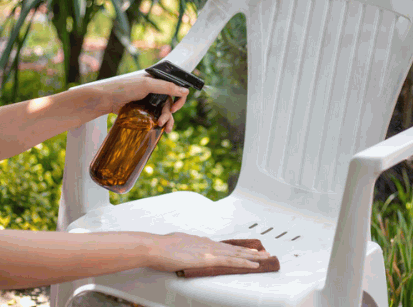
Avoid Using Harsh Chemicals
When cleaning resin plastic patio furniture, it is important to avoid using harsh chemicals that could potentially cause damage or degradation to the furniture’s surface and structure.
When it comes to cleaning your outdoor furniture, it’s important to prioritize safe practices. This not only helps preserve the integrity of the furniture but also ensures its longevity. Harsh chemicals can cause discoloration, cracks, or weakening of the material, which can ultimately impact its durability. Instead, opt for gentle cleaning solutions such as mild detergents, vinegar, or soap and water. These can effectively remove dirt and grime without compromising the quality of your furniture. By following safe cleaning techniques, you can maintain the aesthetics and functionality of your outdoor furniture, allowing you to enjoy it for years to come.
Protect Your Hands
To ensure safety during the cleaning process, it is advisable to protect your hands using gloves or appropriate hand coverings when handling cleaning solutions and scrubbing the resin plastic patio furniture.
It is important to take precautions when using cleaning solutions, especially those with strong chemicals, as they can be harsh on the skin and cause irritation or allergic reactions.
One way to protect yourself is by wearing gloves. This not only provides a barrier against potential skin irritation but also protects against sharp edges or rough surfaces of outdoor furniture, reducing the risk of cuts or scrapes.
When choosing gloves, make sure they are waterproof, durable, and comfortable to wear for an extended period. Prioritizing hand protection can help ensure a safe and effective cleaning experience for your outdoor furniture.

How Often Should You Clean Resin Plastic Patio Furniture?
Establishing a regular cleaning schedule for resin-plastic patio furniture is essential to maintain the beauty and integrity of your outdoor living space. This ensures long-term protection and aesthetic appeal.
Regular maintenance not only keeps your furniture looking pristine but also extends its lifespan, reducing the need for costly replacements and repairs.
Outdoor furniture is exposed to various elements that can tarnish its appearance and weaken its structure, making a cleaning schedule imperative. By following a consistent maintenance routine, you can shield your investment from dirt, mold, and UV damage, preserving its color and structural integrity for years to come. Implementing a cleaning schedule also saves you time and effort in the long run, as it prevents the buildup of stubborn stains and grime that can be challenging to remove.
How To Maintain Resin Plastic Patio Furniture?
Maintaining resin-plastic patio furniture involves a set of practices and precautions aimed at preserving its appearance, shine, and luster while ensuring a fresh, practical, comfortable, and inviting outdoor living space.
Cover Furniture When Not In Use
To protect resin-plastic patio furniture from weathering and UV exposure, it is advisable to cover the furniture when not in use, safeguarding it from potential environmental damage.
This simple practice helps to prevent the fading, discoloration, and deterioration of the furniture caused by prolonged exposure to sun, rain, or snow. By shielding the furniture with a protective cover, you can extend its lifespan and maintain its appearance and structural integrity.
Covering your outdoor furniture when not in use can minimize the need for frequent cleaning and maintenance, saving you time and effort in the long run. It’s a cost-effective measure to ensure that your investment in outdoor furniture remains in top condition for years to come.
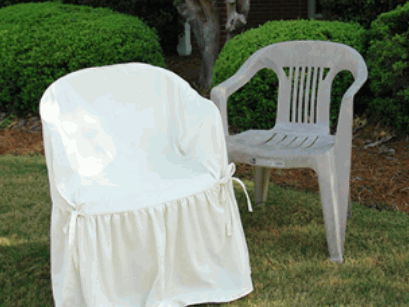
Store Furniture During Harsh Weather
During periods of harsh weather conditions, consider storing resin plastic patio furniture in a protected area to enhance its durability and longevity by shielding it from potential damage.
This practice not only safeguards the furniture from the adverse effects of extreme weather such as rain, snow, and UV exposure but also helps in preserving its original color and texture.
By avoiding prolonged exposure to moisture and sunlight, you can prevent cracking, fading, and brittleness, thus ensuring that your outdoor furniture stays in excellent condition for years to come.
Storing the furniture in a controlled environment reduces the risk of mold and mildew, further extending its lifespan.
Regularly Inspect And Repair Any Damage
Regularly inspect resin plastic patio furniture for any signs of damage and promptly address repairs, following a maintenance guide to ensure the furniture’s structural integrity and longevity.
This proactive approach not only enhances the overall appeal of the outdoor space but also prevents small issues from escalating into major problems.
By adhering to a regular maintenance routine, you can prolong the life of your furniture and keep it looking its best.
Thorough inspections and timely repairs contribute to the furniture’s stability, ensuring its safety and comfort for all users.
Taking these steps can go a long way in preserving the quality and durability of your outdoor furniture.
